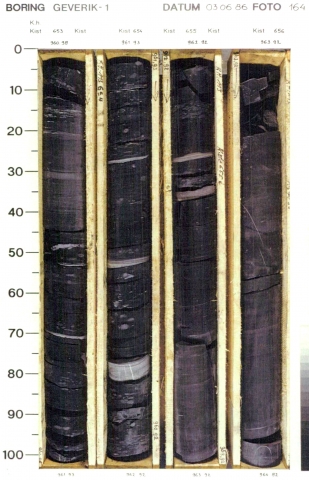Interval of dark-grey or black, bituminous, shaly claystones, with abundant intercalated laminae of graded siltstone and very fine-grained sandstone. In the type section, dark-grey to black limestone laminae are intercalated in the basal part. The tops of individual beds are frequently silicified. Tuffaceous bands of cm- to mm-thickness can occur. Because of its high uranium- and thorium-content, the unit stands out prominently on GR-logs (300-500 API units).
Settled from suspension in an anoxic marine basin with restricted circulation. Low clastic sedimentation rates and distal turbidites.
In the type section a gradual transition can be observed from the limestone-shale alternation of the Carboniferous Limestone Group into the marly basal interval of the Geverik Member. Elsewhere, the member is usually found to rest unconformably on massive Mississippian (Dinantian) carbonates.
The ‘hot shales’ pass upwards into the non-bituminous, dark-coloured mudstones of the Epen Formation. The upper boundary is defined by the disappearance of the bituminous character, reflected by an abrupt upward shift to lower GR-log readings.
